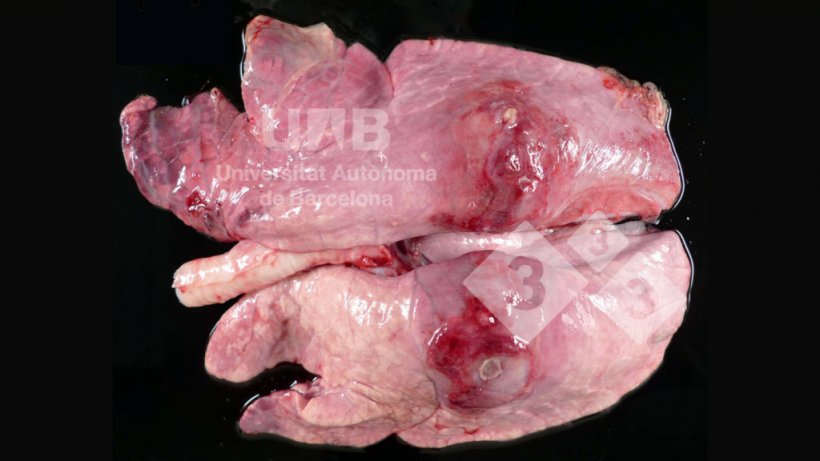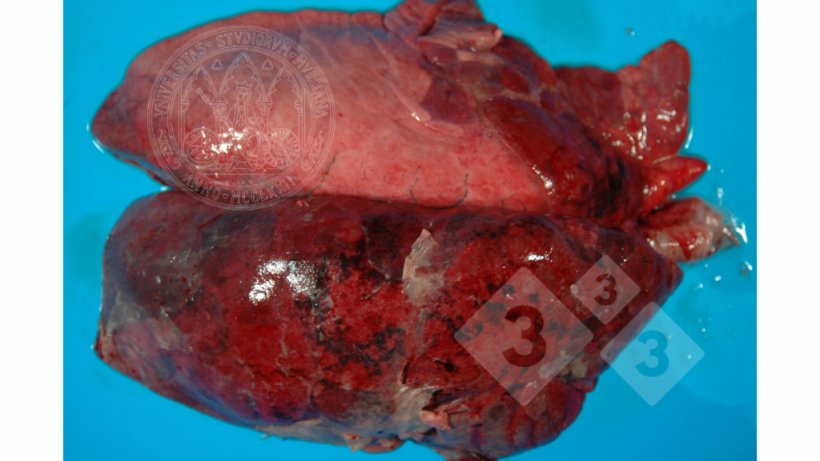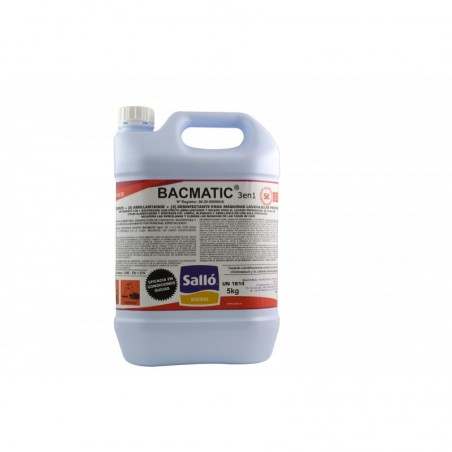At the diagnostic level, what tools do we have, and how can we use them to help with prevention and control?
Pallarés stresses the importance of starting with a correct clinical and anatomopathological diagnosis since it will give us information about the form of the disease present on the farm: hyperacute, acute, or chronic, the latter being more difficult to diagnose because, since there is normally no associated mortality, the only clinical sign that is usually appreciated is slowed growth. In lungs showing the characteristic lesions of the process (fibrinous bronchopneumonia with areas of hemorrhage and necrosis; hyperacute and acute forms of the disease), we can isolate the bacteria by microbiological culture. The isolation of the bacteria will allow us to perform an antibiogram to find the antibiotic of choice for treatment, the minimum inhibitory concentration (MIC), and the serotype that is causing the problem or to obtain the antigen for the creation of an autogenous vaccine. Regarding serological diagnosis, there are tests against ApxIV toxin, present in all serotypes and therefore they would be useful to detect positive or negative animals, and specific serotype tests, based on the detection of antibodies against the lipopolysaccharides of the bacterium but they present the problem that they can give cross-reactions between certain serotypes, such as 1, 9, and 11; 4 and 7; and 3, 6, 8, and 15.
How can we monitor the evolution of the disease in the production pyramid?
Espigares and Vela believe that production parameters and the impact on performance are good measures to evaluate the evolution of the problem: specific mortality due to the disease, number of outbreaks, antibiotic use, and average daily gain. Espigares and Pallarés agree that the periodic evaluation of the level of lesions compatible with the disease at the slaughterhouse, is also another interesting parameter to determine what the impact of the disease is and how it evolves.


Figure 1. Fibrinous-necrotizing pleuropneumonia compatible with App. Source: UAB.
Figure 2. Pleuropneumonia compatible with App Source: Francisco José Pallarés, University of Murcia.
Do you consider eradication on a farm feasible?
In Vela's opinion, it is not possible, and prevention and control are the only two practical options considering the current reality. Espigares does not consider on-farm eradication feasible either; he says there is not a reproducible method that guarantees an acceptable success rate. He adds that, although some positive experiences have been described, the reality is that they are not reproducible on all farms, since the same method that works on one farm, most of the time does not work on others. This is probably due to the great persistence of the bacteria in the tonsillar crypts and the difficulty of antibiotics to reach an effective MIC.
Pallarés believes that eradication is possible, but it is a difficult task. He mentions that there are different strategies to eradicate the disease such as depopulation and subsequent repopulation, segregated medicated early weaning, test and removal, and partial depopulation plus antibiotic treatment. Depopulation/repopulation is a very costly system and presents the problem that, on some farms, depopulation may result in the loss of the genetic lines present. Medicated segregated early weaning involves a combination of vaccination, medication, and elimination of positive animals. Such strategies, besides being questionable from a production point of view, are not allowed by current animal welfare legislation in some countries. The success of the test and removal will depend on the serological diagnostic method used; if tests with low sensitivity are used, not all carriers are eliminated, and if test with low specificity are used, healthy animals that are not carriers are eliminated. Partial depopulation plus antibiotic treatment have the problem that antibiotics are not able to eliminate the pathogen in all carriers and there is no solid evidence that partial depopulation can eliminate all App serotypes. All these measures have their advantages and disadvantages.










